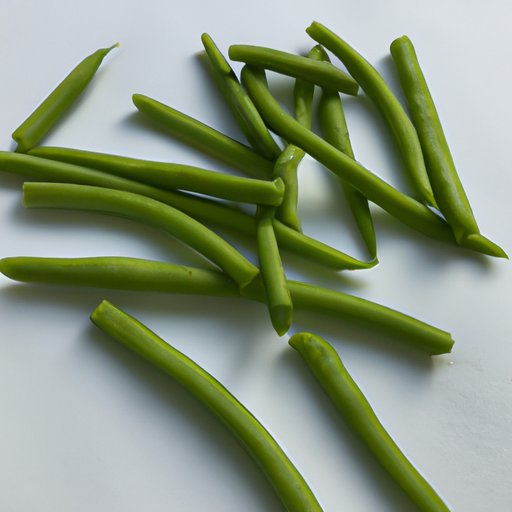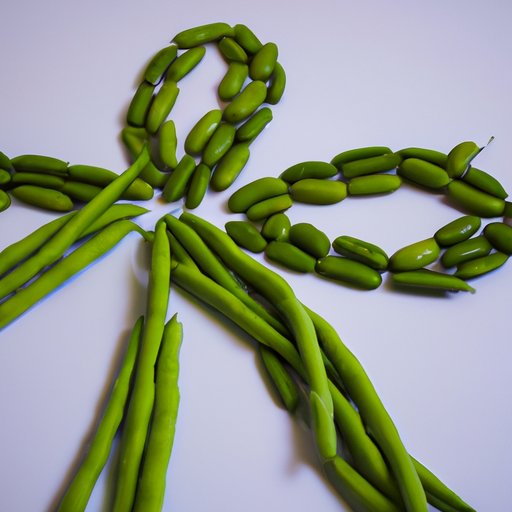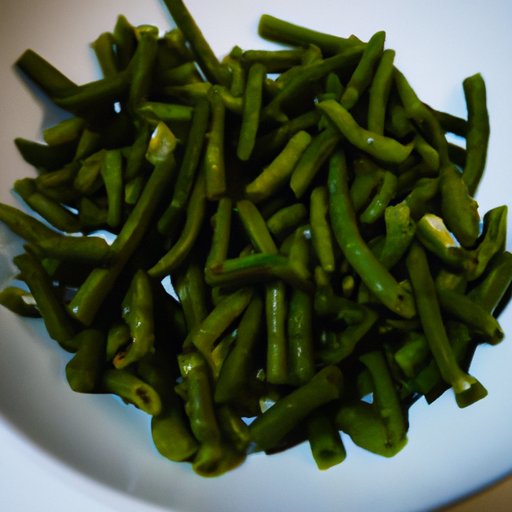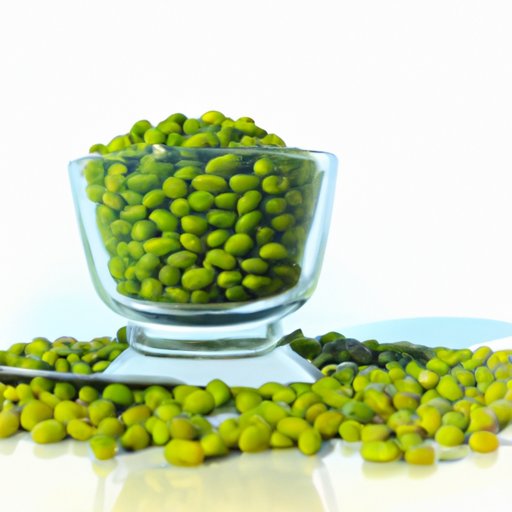Introduction
Green beans, also known as string beans or snap beans, are an edible legume that have been enjoyed for centuries. They are usually a deep green color, but can also come in yellow, purple, and even striped varieties. Green beans are low in calories, high in fiber, and packed with essential vitamins and minerals. In addition to their great taste and versatility, green beans offer numerous health benefits and can be easily incorporated into a healthy diet.

Nutritional Benefits of Eating Green Beans
Green beans are an excellent source of several key vitamins and minerals, including vitamin A, vitamin C, folate, iron, and potassium. One cup of cooked green beans provides 3.4 grams of dietary fiber, which is important for healthy digestion and regularity. Additionally, green beans are low in calories; one cup of cooked green beans contains just 44 calories.
Green beans are also a good source of macronutrients. One cup of cooked green beans has 2.6 grams of protein, 0.3 grams of fat, and 9.9 grams of carbohydrates. This makes them a great choice for anyone looking to add more plant-based proteins to their diet.

How to Incorporate Green Beans into a Healthy Diet
Green beans are incredibly versatile and can be used in a variety of dishes. They can be steamed, boiled, sautéed, roasted, grilled, stir-fried, or eaten raw. They can be added to salads, soups, casseroles, pastas, and side dishes. They can also be enjoyed as a snack, either plain or with a dip.
When incorporating green beans into your diet, it’s important to choose fresh, organic green beans whenever possible. Look for green beans that are firm and brightly colored, with no sign of wilting or discoloration. If you’re buying canned green beans, make sure to check the label for any added ingredients such as salt or sugar.
Health Benefits of Eating Green Beans
In addition to providing essential vitamins and minerals, green beans offer numerous health benefits. According to a study published in the journal Nutrition Reviews, eating more vegetables like green beans may help protect against chronic diseases such as diabetes, heart disease, and certain types of cancer. The fiber content of green beans can also help improve digestion and reduce digestive issues such as constipation.
Eating green beans can also increase energy levels due to their high vitamin and mineral content. The fiber in green beans helps slow down the absorption of sugar, preventing spikes in blood sugar levels that can lead to fatigue.
The Role of Green Beans in Weight Loss
Green beans are an ideal food for anyone trying to lose weight. Their low calorie content makes them a great substitute for higher calorie foods such as potatoes or rice. In addition, the high fiber content of green beans can help keep you feeling full longer, making it easier to stick to a healthy diet.
Green beans can also help reduce cravings for unhealthy foods. Research published in the journal Nutrition found that people who ate a high-fiber diet experienced fewer cravings for unhealthy snacks than those who ate a low-fiber diet.
A Guide to Buying and Cooking Green Beans
When selecting fresh green beans, look for beans that are bright green in color, firm, and free of blemishes. Avoid beans that are limp or have brown spots. When buying canned green beans, read the label carefully to make sure there are no added ingredients such as salt or sugar.
Green beans can be cooked in a variety of ways. Steaming, boiling, roasting, grilling, and stir-frying are all popular methods. When cooking green beans, it’s important not to overcook them as this can cause them to become mushy. To retain their flavor and texture, cook them until they are tender but still have a slight crunch.

Green Bean Recipes for Every Meal
Green beans can be enjoyed in a variety of dishes for every meal. For breakfast, try adding green beans to omelets or frittatas. For lunch and dinner, green beans can be added to pasta dishes, salads, casseroles, and stir-fries. As a snack, green beans can be enjoyed plain or with hummus or another favorite dip.
There are also many seasonal green bean dishes that can be enjoyed throughout the year. In the summer, try grilling green beans with olive oil and herbs. In the spring, green beans can be added to quiches or frittatas. In the fall and winter, green beans can be roasted with garlic and other seasonal vegetables.
Conclusion
Green beans are an incredibly nutritious and versatile vegetable that can be enjoyed in a variety of dishes. They are low in calories, high in fiber, and packed with essential vitamins and minerals. Eating green beans can help protect against chronic diseases, improve digestion, and increase energy levels. They can also help with weight loss by providing a low-calorie alternative to higher calorie foods and helping to reduce cravings for unhealthy snacks.
By incorporating green beans into your diet, you can enjoy all of these health benefits and get creative with different recipes. Whether you’re enjoying them as a snack, adding them to salads and casseroles, or trying out seasonal dishes, green beans are sure to become a staple in your kitchen.
(Note: Is this article not meeting your expectations? Do you have knowledge or insights to share? Unlock new opportunities and expand your reach by joining our authors team. Click Registration to join us and share your expertise with our readers.)
